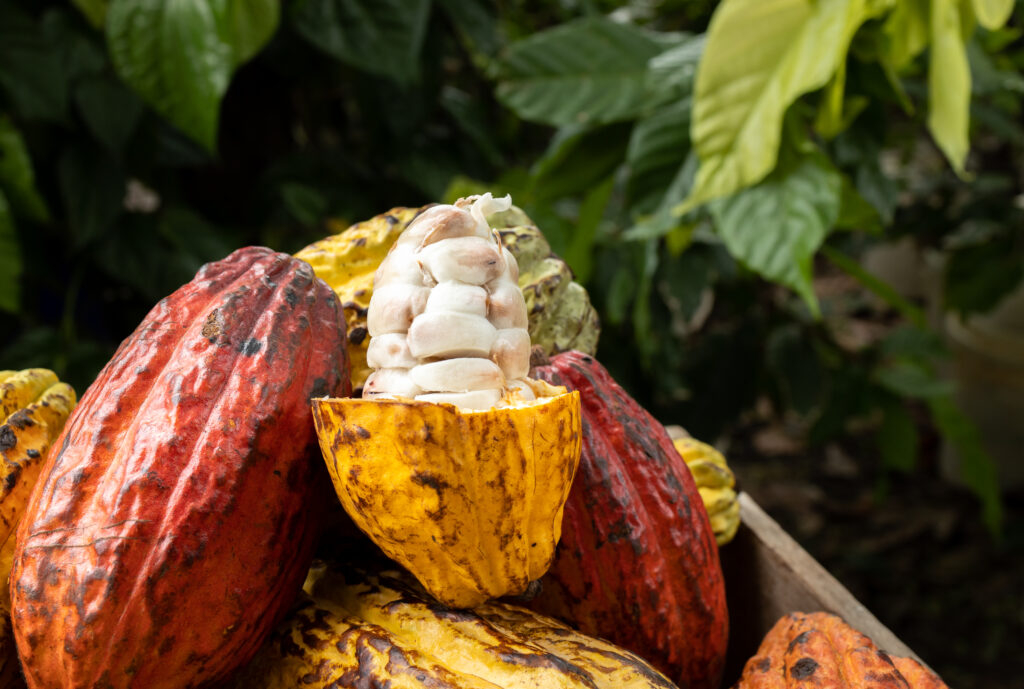Who invented chocolate?
Answering the question of who invented chocolate is not simple because its evolution throughout history involved multiple cultures and civilizations, and the process of transforming cocoa into chocolate was a gradual process that developed over centuries.
Its invention is the result of a complex and multifaceted historical process that cannot be attributed to a single person or culture. Rather, it is the result of the contribution of various civilizations over time and through different forms of preparation and consumption.
So in this article we are going to look at part of this historical evolution of the chocolate creation process.
The Origins of Cocoa and Chocolate in Latin America
It all starts in the Amazon
Cocoa (Theobroma cacao) is a tree native to the tropical regions of the Americas, specifically the Amazon rainforest. Its origins date back thousands of years, and the first civilizations to use it were the pre-Columbian cultures that inhabited these areas. These cultures used the cocoa millet (a sweet substance) as a beverage. Specifically, the oldest remains date back to 3,500 BC. So humans have been consuming the cocoa fruit for more than 5,000 years.

Cocoa: A Treasure of Ancient Civilizations
As a result of trade and human migrations, cocoa arrived around 1900 BC in Mesoamerica, in what is now Mexico, Guatemala and Honduras. Pre-Columbian civilizations, such as the Olmecs, Mayas and Aztecs, revered cacao and considered it a divine gift from the gods. In fact, the Olmecs were the first civilization to invent the process of fermenting, drying and roasting cocoa. Methods, which are still used today.
The Value of Cocoa in Mayan and Aztec Culture
The Maya, in particular, had a special relationship with cacao. They called it “kakaw” and used it in religious rituals, celebrations and as currency. They drank a cocoa mixture called “chocolatl,” which was prepared with cocoa, water and spices, often chili. This bitter, thick concoction was very different from the chocolate we know today, but it was a fundamental precursor.
The Aztecs inherited the cocoa tradition from the Maya and gave it their own twist. They called their cocoa drink “xocolātl” and sweetened it with honey and vanilla. The Aztecs also believed that cocoa had stimulating and aphrodisiac properties, which made it a valued beverage in their society.
Mesoamerican civilizations had a deep respect for cacao and used it in a variety of significant ways:
- Offerings to the Gods: In many of these cultures, cocoa was considered a gift from the gods. It was used in religious rituals and ceremonies as an offering to gain divine favor.
- Sacred Drink: Cocoa was prepared mainly as a thick, bitter drink. The Mayans, for example, called it “kakaw” and mixed it with water and spices to make a drink that was often served in special jars and consumed in ceremonies.
- Currency: Cocoa was also used as currency in some cultures. The Aztecs, for example, allowed people to buy products and services with cocoa beans.
- Healing Properties: In addition to its religious and cultural importance, cacao was believed to have medicinal properties. It was used to treat a variety of ailments and was considered a stimulant.
- Symbol of Wealth: Cocoa was so valuable that it was associated with wealth and power. The leaders of these civilizations were the only ones who had exclusive access to cocoa and chocolate consumption.

Chocolate: A Mesoamerican Invention
So who invented chocolate as we know it today? The answer lies in Mesoamerican cultures. Although cocoa was already appreciated in beverage form, the transformation into solid chocolate was a later achievement.
The first solid chocolate bars
Both Maya and Aztecs prepared a cocoa paste by mixing ground cocoa with other ingredients such as chili and achiote. This paste was molded into tablets that were easy to transport and store. While it was not the solid chocolate we know, it marked an important step towards its creation.
These tablets were ideal for trade and consumption, and could be considered the forerunners of our modern chocolate bars. When the chocolate wanted to be drunk, it was simply necessary to dissolve the solid chocolate with water, until the chocolate drink was obtained. This was ideal especially if you had to make long trips, so the chocolate was always ready to be consumed.
The Legacy of Cocoa and Chocolate
The arrival of Europeans in Latin America in the 16th century marked a turning point in the history of cocoa and chocolate. The Spanish took cocoa back to Europe, where it was adapted and transformed into the beverage and sweet we know today.
Chocolate spread around the world and became a symbol of indulgence and pleasure. However, we must not forget its humble beginnings in Latin America and its profound significance in pre-Columbian cultures.

Conclusion
In short, cocoa and chocolate have a rich and fascinating history in Latin America. From their roots in ancient civilizations to their evolution into modern chocolate, these delicacies continue to be a tribute to the rich heritage of the region and the creativity and ingenuity of the cultures that made them possible. The next time you enjoy a piece of chocolate, remember that you are tasting centuries of history and tradition.
If you want to learn even more about the history of chocolate, we invite you to visit us at Kina Chocolates, where you can learn in our workshops and chocolate tastings the fascinating history of chocolate, as well as its elaboration process and how its main raw material, cocoa, is cultivated.
Greetings chocoholics!


